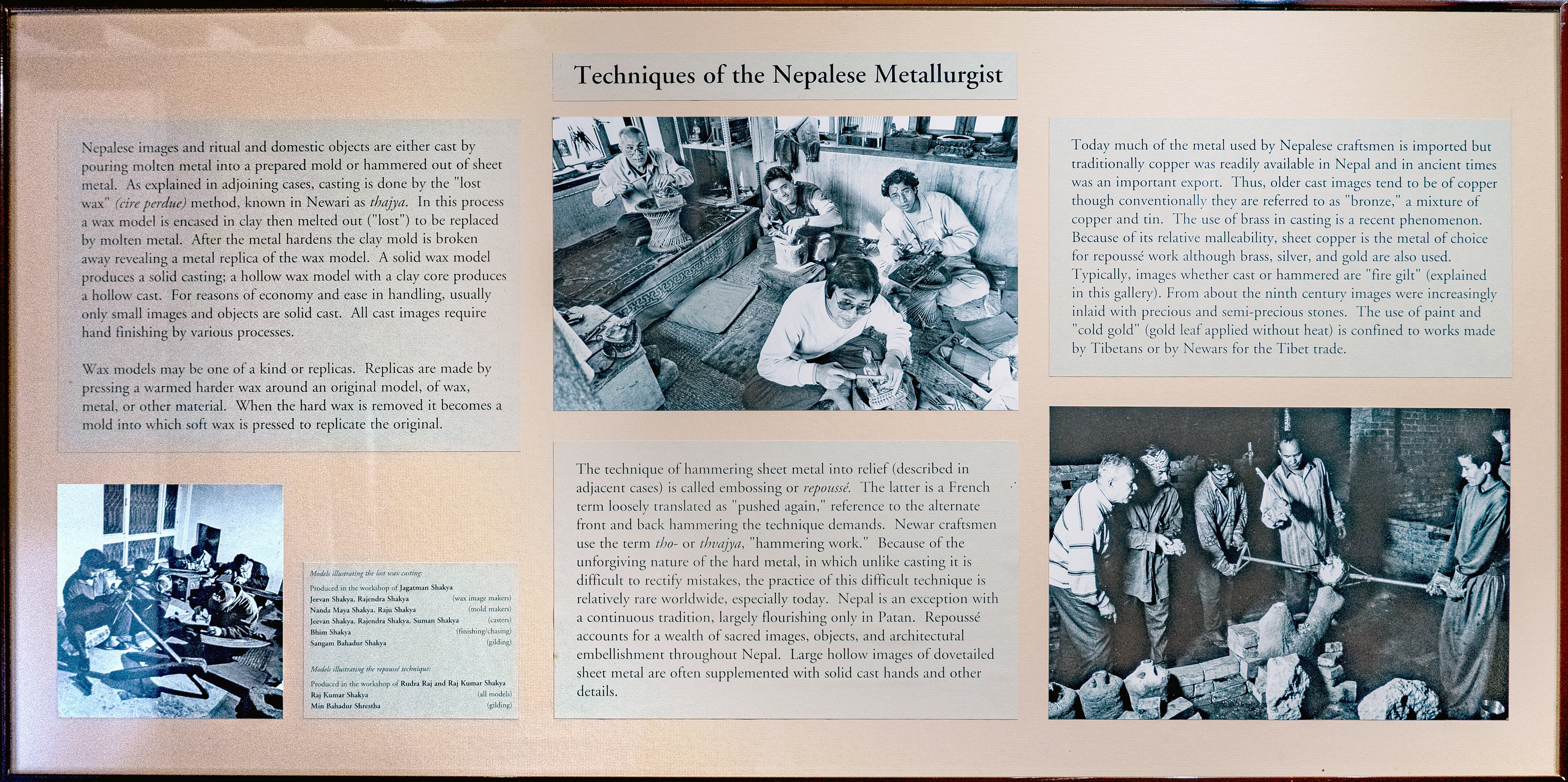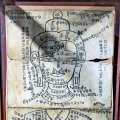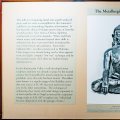Patan Museum (Nepal): photo 208
Photo 208 of 212 in Gallery: Patan Museum (Nepal)

Image title: Techniques of the Nepalese Metallurgist
Description of the photo
Techniques of the Nepalese Metallurgist—Nepalese images and ritual and domestic objects are either cast by pouring molten metal into a prepared mold or hammered out of sheet metal. As explained in adjoining cases, casting is done by the “lost wax” (cire perdue) method, known in Newari as thajya. In this process a wax model is encased in clay then melted out (“lost”) to be replaced by molten metal. After the metal hardens the clay mold is broken away revealing a metal replica of the wax model. A solid wax model produces a solid casting; a hollow wax model with a clay core produces a hollow cast. For reasons of economy and ease in handling, usually only small images and objects are solid cast. All cast images require hand finishing by various processes.
Wax models may be one of a kind or replicas. Replicas are made by pressing a warmed harder wax around an original model, of wax, metal, or other material. When the hard wax is removed it becomes a mold into which soft wax is pressed to replicate the original.
The technique of hammering sheet metal into relief (described in adjacent cases) is called embossing or repoussé. The latter is a French term loosely translated as “pushed again,” reference to the alternate front and back hammering the technique demands. Newar craftsmen use the term thojya or thajya/thvajya, “hammering work.” Because of the unforgiving nature of the hard metal, in which unlike casting it is difficult to rectify mistakes, the practice of this difficult technique is relatively rare worldwide, especially today. Nepal is an exception with a continuous tradition, largely flourishing only in Patan. Repousse accounts for a wealth of sacred images, objects, and architectural embellishment throughout Nepal. Large hollow images of dovetailed sheet metal are often supplemented with solid cast hands and other details.
Today much of the metal used by Nepalese craftsmen is imported but traditionally copper was readily available in Nepal and in ancient times was an important export. Thus, older cast images tend to be of copper though conventionally they are referred to as “bronze,” a mixture of copper and tin. The use of brass in casting is a recent phenomenon. Because of its relative malleability, sheet copper is the metal of choice for repoussé work although brass, silver, and gold are also used. Typically, images whether cast or hammered are “fire gilt” (explained in this gallery). From about the ninth century images were increasingly inlaid with precious and semi-precious stones. The use of paint and “cold gold” (gold leaf applied without heat) is confined to works made by Tibetans or by Newars for the Tibet trade.
[Photograph bottom-left]—
Models illustrating the lost wax casting:
Produced in the workshop of Jagatman Shakya;
Jeevan Shakya, Rajendra Shakya — (wax image makers);
Nanda Maya Shakya, Raju Shakya — (mold makers);
Jeevan Shakya, Rajendra Shakya, Suman Shakya — (casters);
Bhim Shakya — (finishing/chasing);
Sangam Bahadur Shakya — (gilding);
Models illustrating the repoussé technique:
Produced in the workshop of Rudra Raj and Raj Kumar Shakya Raj Kumar Shakya — (all models);
Min Bahadur Shrestha — (gilding);
Gallery information:
The Patan Museum is located on the Durbar square of Patan (Lalitpur/Lalitapura, Kathmandu, Nepal) which is associated Keshav Narayan Chowk (Keshavnarayan)—a form of Lord Vishnu. Being listed as a World Heritage Site, the whole of Durbar square is filled with exquisite temples, sculptures and other ancient structures, of which the ancient history history can be traced to the Malla Kings of Lalitpur. It is an important site for both Buddhism and Hinduism.
Photo details:
Date: 2019-12-02
Camera: SONY ILCE-6400
Exposure: 1/160
Aperture: f/4
ISO: 1000
Focal length: 18mm
High resolution:
Download file
Size: 5.30 MB
Resolution: 4012 x 2000
© Photograph by Gabe Hiemstra.
License: CC BY-NC-ND 4.0

